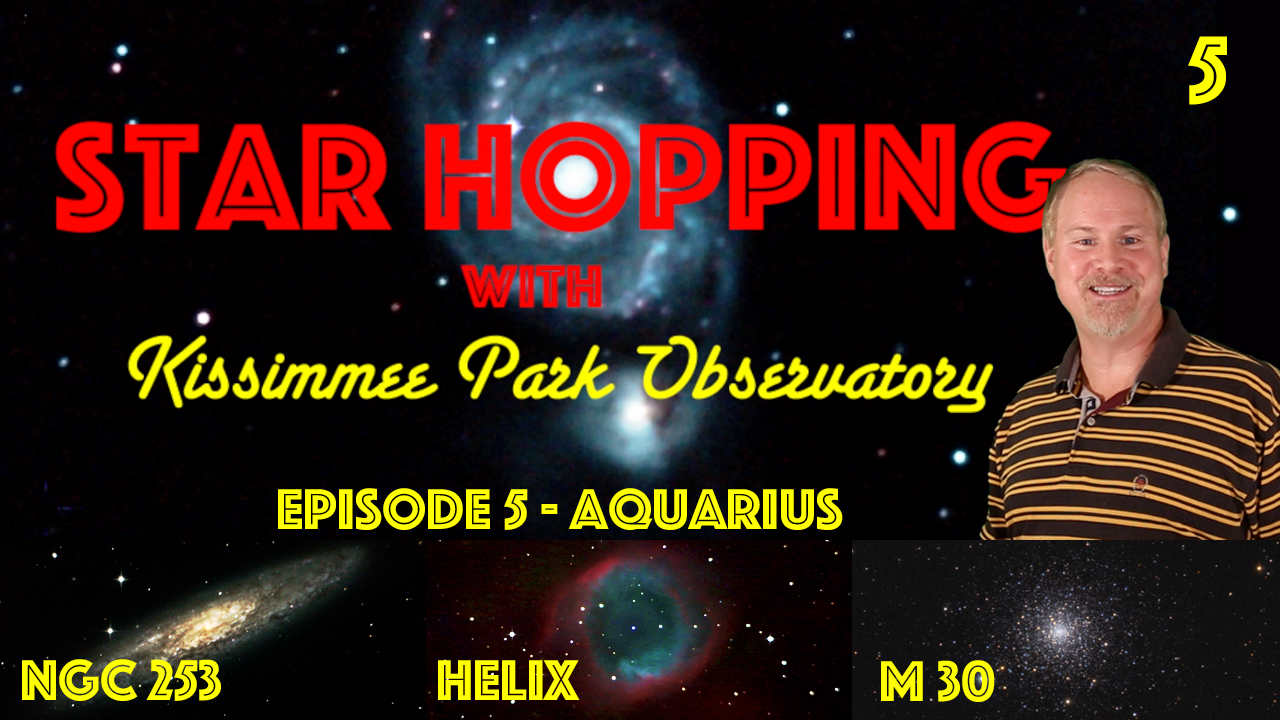In Episode SH005 of Star Hopping…
We’re looking at the Aquarius “water” region of the sky in this week’s episode, and will locate the Sculptor Spiral Galaxy, the Helix Nebula, and the Globular Cluster M30.
Please subscribe to our YouTube Channel! We definitely appreciate any sharing you can do as well to spread the word.
Intro
In this installment of Star Hopping, we are focusing on the “water” region of the Autumn sky, containing the constellations of Aquarius the Water Bearer, Pisces Austrinus the Southern Fish, and Cetus the Whale. The set of deep sky objects that we’re finding tonight are definitely fainter and will require a telescope to locate them, although you could potentially pick them up in your binoculars if you have a dark sky. These targets will appear about midway up in the south and southeastern skies, around 10 PM, at the end of October.
The Water Bearer
The center constellation of this watery group is the ancient constellation of Aquarius, initially documented in the second century by the Greek astronomer Ptolemy. It’s an extremely large constellation, covering nearly 1000 square degrees, making it the 10th largest constellation in the sky. There are really no especially bright stars in Aquarius, which makes it somewhat difficult to pick out, particularly if you are dealing with some light pollution in your location. It’s always best to try to get away from city lights for your astronomical viewing activities.
In Aquarius, there is one easily recognized pattern of stars, known as the “Water Jar”, two curves of stars that represent the opening of the water carrying vessel that Aquarius is toting. The water jar lies near the border of the constellation of Pisces Austrinus, with its bright star Fomalhaut.
To the left of the Water Jar lies the constellation of Cetus, which is where we’ll be starting our search for our first target, NGC 253, better known as the Sculptor Spiral, or the Silver Dollar Galaxy. This is a very large spiral galaxy, nearly a half degree on its long axis, just as big as the full moon. In the eyepiece it appears large and ghostly pale, but in astrophotos, like this one taken with the KPO Reflector, it reveals beautiful detail in its core. Ready for a Galaxy hunt? Let’s get started…
CLICK >>> Watch this Episode on YouTube!
Let us know your Questions and Comments!
Please feel free to leave a question or comment below, and we will respond as quickly as we can. You can also reach out to Dave on Twitter @StarHoppingMan.
Connect with Star Hopping!
We would love to have you join us on our various social media sites, and subscribe to our newsletter. Visit our Contact page to connect with us!
Credits for this Episode
- Star Chart Images & Simulations Courtesy of SkySafari Astronomy http://SkySafariAstronomy.com.
- NGC 253 image by David Hearn / Kissimmee Park Observatory
- Helix Nebula image by David Hearn / Kissimmee Park Observatory
- M30 image by Siggi Kohlert


